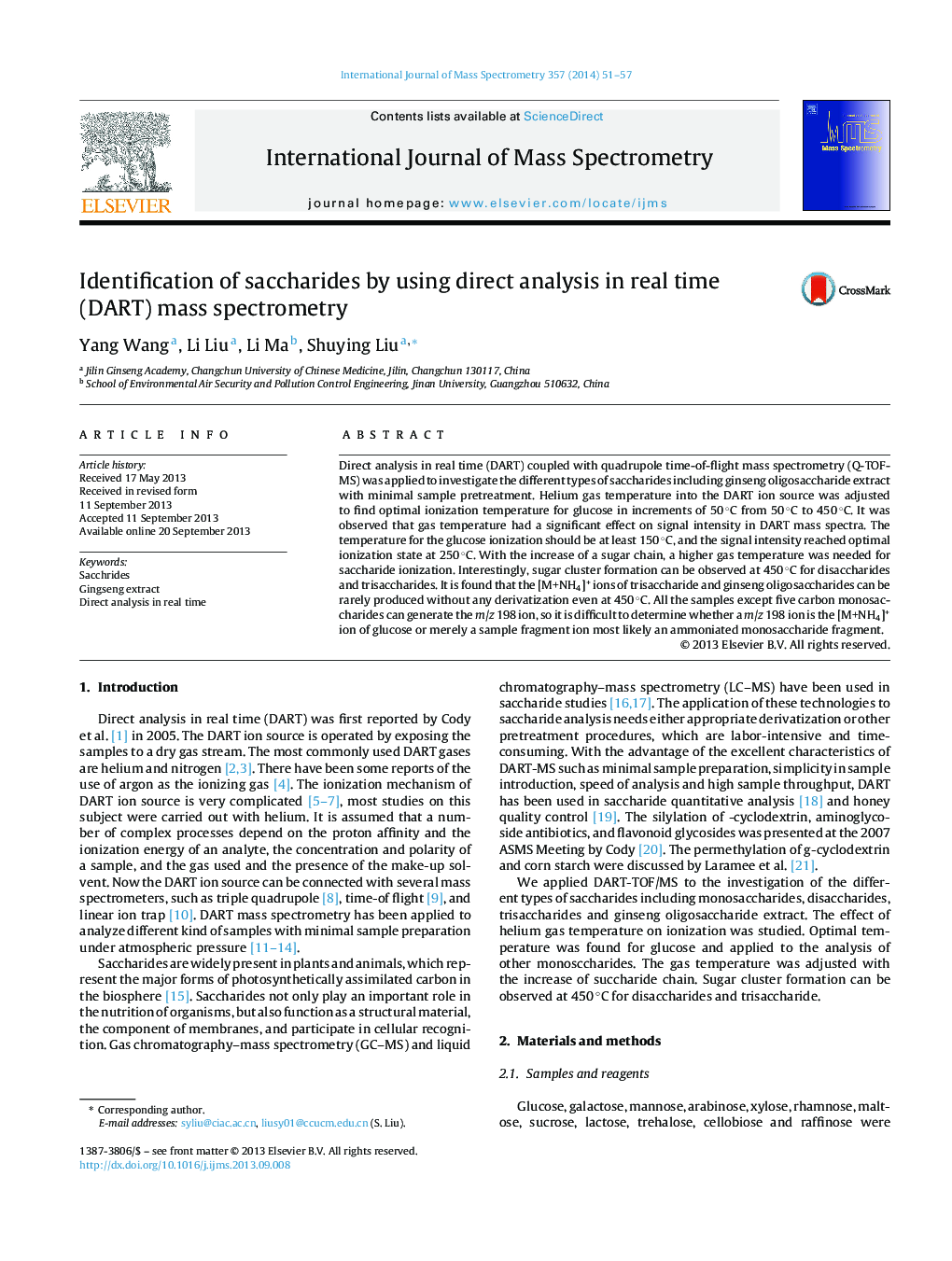| Article ID | Journal | Published Year | Pages | File Type |
|---|---|---|---|---|
| 1192148 | International Journal of Mass Spectrometry | 2014 | 7 Pages |
•Different types of saccharides were detected by using direct analysis in real time mass spectrometry (DART-MS).•Saccharides were detected without derivatization, whileas the formation of sugar cluster was observed for disaccharides and trisaccharides.•It was observed that gas temperature had a significant effect on signal intensity of saccharides at different temperature.
Direct analysis in real time (DART) coupled with quadrupole time-of-flight mass spectrometry (Q-TOF-MS) was applied to investigate the different types of saccharides including ginseng oligosaccharide extract with minimal sample pretreatment. Helium gas temperature into the DART ion source was adjusted to find optimal ionization temperature for glucose in increments of 50 °C from 50 °C to 450 °C. It was observed that gas temperature had a significant effect on signal intensity in DART mass spectra. The temperature for the glucose ionization should be at least 150 °C, and the signal intensity reached optimal ionization state at 250 °C. With the increase of a sugar chain, a higher gas temperature was needed for saccharide ionization. Interestingly, sugar cluster formation can be observed at 450 °C for disaccharides and trisaccharides. It is found that the [M+NH4]+ ions of trisaccharide and ginseng oligosaccharides can be rarely produced without any derivatization even at 450 °C. All the samples except five carbon monosaccharides can generate the m/z 198 ion, so it is difficult to determine whether a m/z 198 ion is the [M+NH4]+ ion of glucose or merely a sample fragment ion most likely an ammoniated monosaccharide fragment.
Graphical abstractFigure optionsDownload full-size imageDownload high-quality image (122 K)Download as PowerPoint slide
